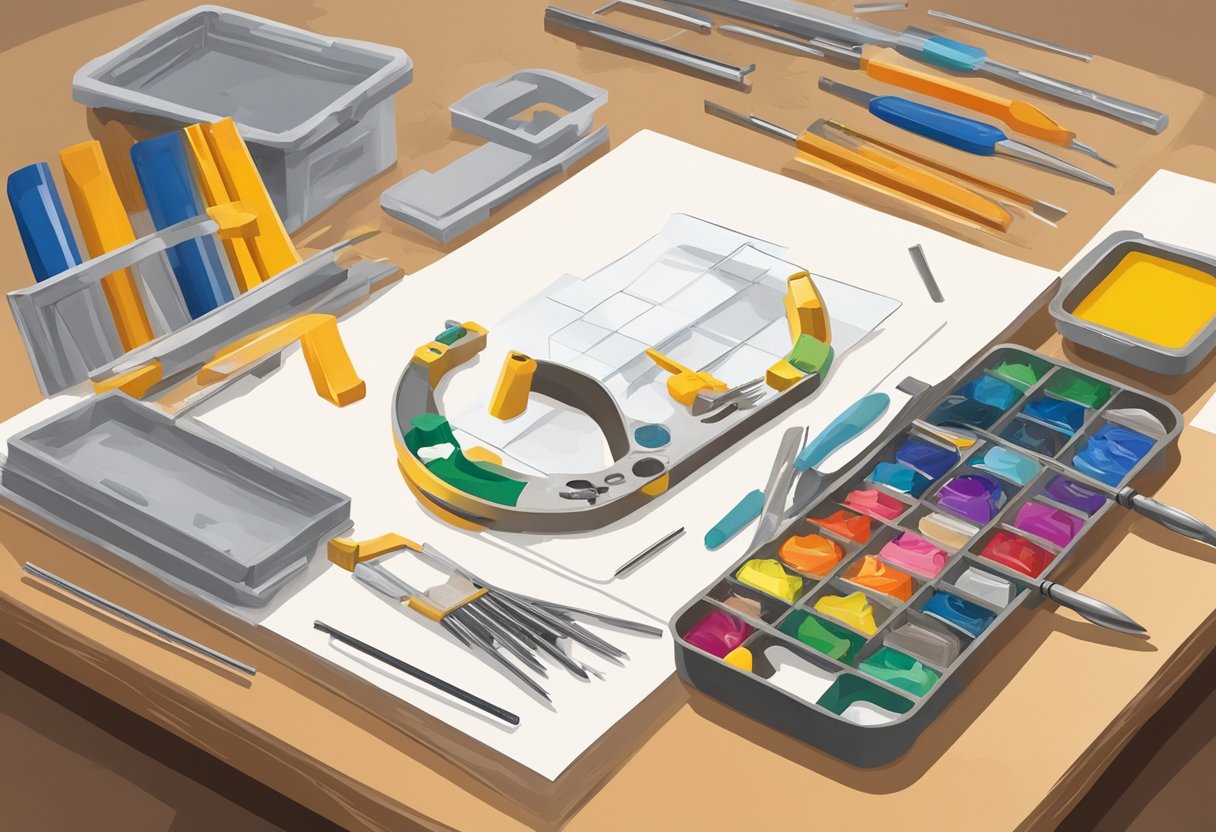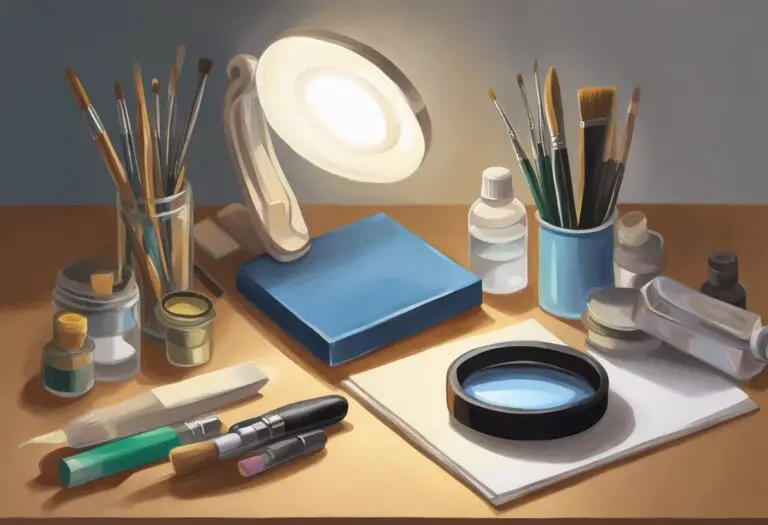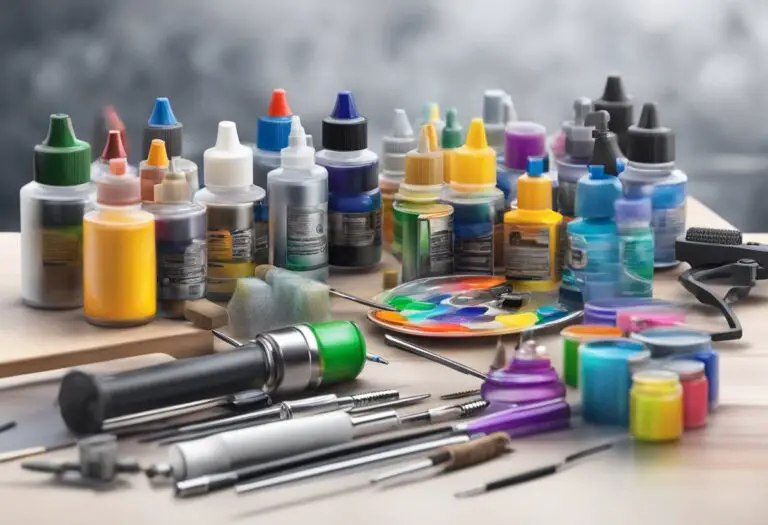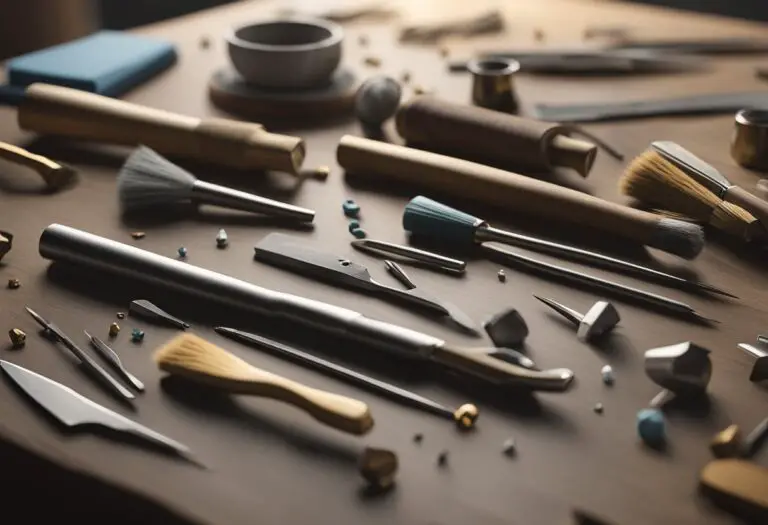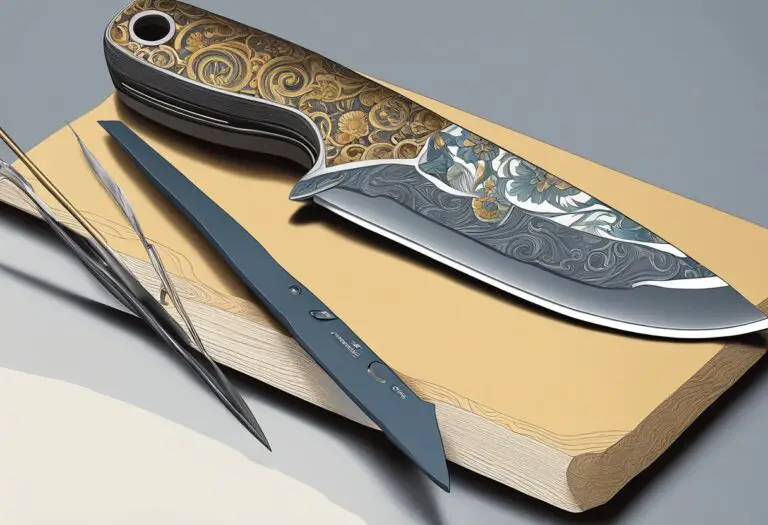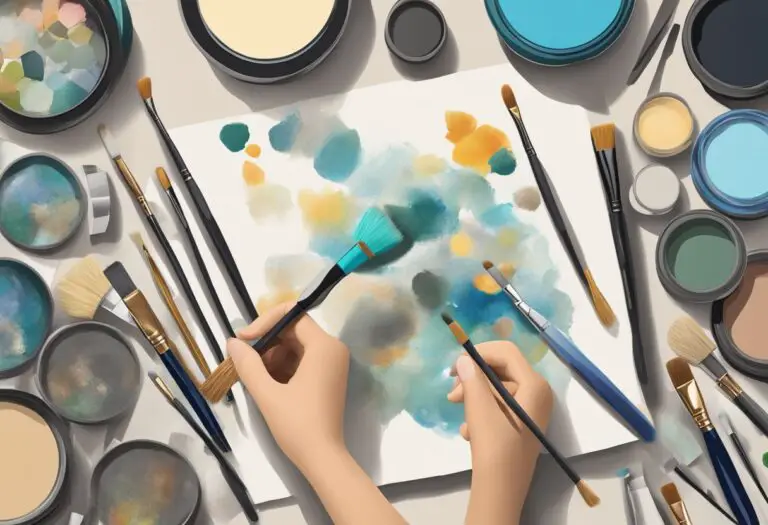Best Pinning Tools for Miniature Painting
Did you know that using the right pinning tools can elevate your miniature painting to a whole new level of precision and perfection? Whether you’re a seasoned painter or just starting out, having the proper tools by your side can make all the difference in bringing your miniatures to life.
In this article, we will explore the best pinning tools available for miniature painting, ensuring that every stroke of your brush is met with unparalleled accuracy. From drill bits to pin vises, brass rods to pinning putty, we will uncover the essential tools and techniques that will help you achieve flawless results.
So, get ready to learn about the tools that will revolutionize your miniature painting journey. Let’s dive into the world of pinning tools and discover the secrets to unlocking precision and ease in your artistic endeavors.
Understanding Pinning Tools
Before we delve into the best pinning tools, let’s first understand what pinning tools are and how they can enhance your miniature painting experience. Pinning tools are a must-have for miniature painters who strive for precision and stability in their projects. These tools are designed to securely attach different parts, reinforce weak joints, and provide added durability to your miniatures.
There are several types of pinning tools available, each serving a specific purpose in the miniatures hobby. Understanding these tools and their uses will help you make informed choices and elevate your painting skills to new heights.
Types of Pinning Tools
1. Pin Vises: Pin vises are versatile tools that allow you to hold and drill tiny holes in your miniatures. They come in different sizes and allow for precise control during the drilling process. Pin vises are essential for creating stability and providing a firm anchor for brass rods or other pinning materials.
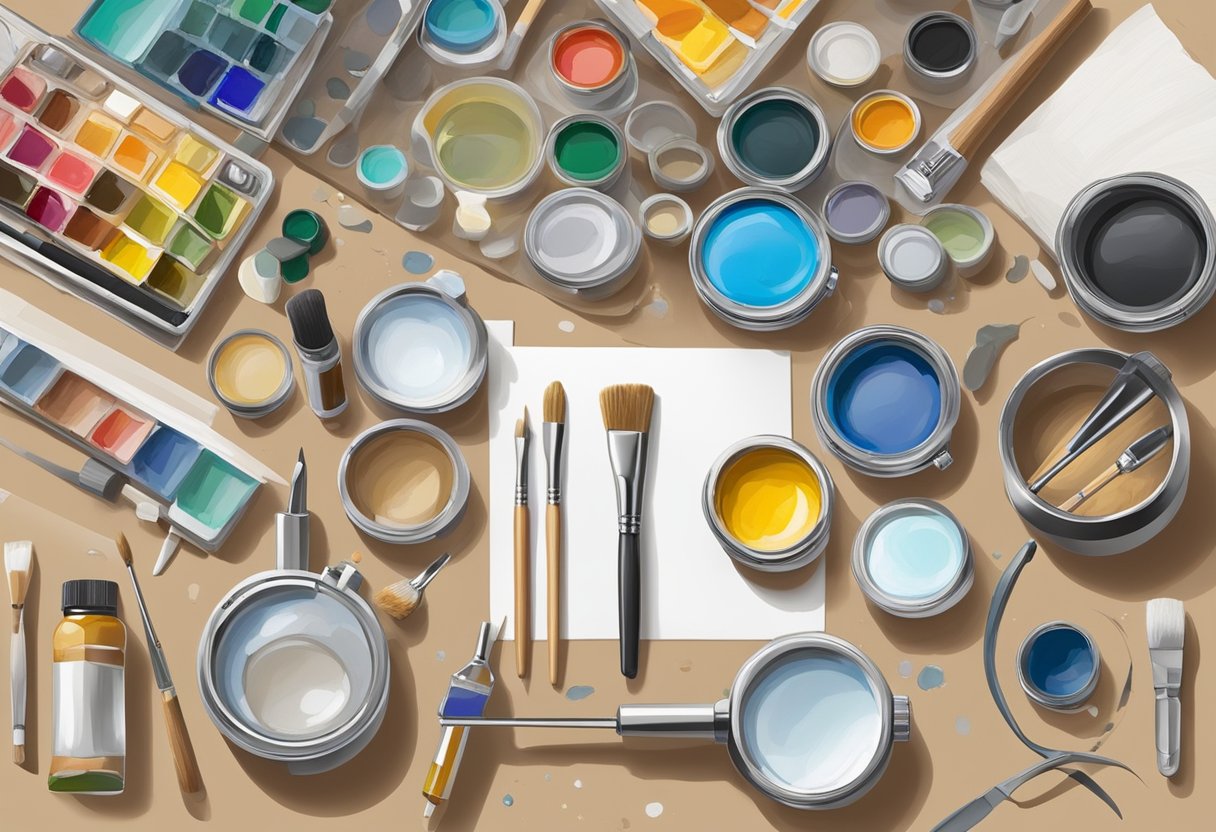
2. Drill Bits: Drill bits are crucial components of pinning tools as they are used to create holes in the miniature models for pinning. They are available in various sizes and types, allowing you to customize the diameter of the holes according to your project’s needs.
3. Brass Rods: Brass rods are commonly used for pinning miniature models. These sturdy rods provide strength and stability to fragile joints or parts. They come in different sizes and lengths, allowing you to choose the appropriate rod for your specific project requirements.
4. Pinning Putty: Pinning putty is a versatile adhesive used for securing the miniature model to the base or attaching different parts together. It offers a non-permanent solution, allowing for easy modifications or repositioning during the painting process.
5. Pinning Drills: Pinning drills are specialized tools designed for drilling holes in miniature models. They offer precise control and accuracy, making them ideal for delicate projects. Pinning drills are compatible with various materials, ensuring clean and seamless holes for pinning.
6. Needle Files: Needle files are essential for smoothing and shaping drilled holes in miniature models. They allow you to refine the holes, ensuring a seamless fit for the pinning materials. Needle files come in different shapes and sizes, catering to various miniature painting requirements.
The Importance of Pinning Tools
Pinning tools play a vital role in creating durable and stable miniatures. They allow you to reinforce joints, prevent breakages, and add longevity to your painted models. Pinning tools are indispensable for gamers who handle their miniatures during gameplay, as they provide added strength and durability to withstand frequent handling and transport.
By using the right pinning tools and techniques, you can take your miniature painting to the next level. Whether you are a hobbyist or a professional miniature painter, understanding pinning tools and their advantages will enhance your overall painting experience.
Pin Vises
Pin vises are indispensable tools for miniature painters, providing versatility and precision in your painting process. These essential accessories allow you to effortlessly hold and drill tiny holes in your miniatures, ensuring stability and ease while working on intricate details. Whether you’re a beginner or an experienced artist, utilizing pin vises can greatly enhance your miniature painting experience.
Drill Bits
Drill bits are an essential component of pinning tools used in miniature painting. They enable painters to create accurate and precise holes in the miniature models, allowing for secure pinning. When it comes to drill bits for miniature painting, there are various sizes and types to choose from, each with its own advantages.
Types of Drill Bits
Here are some of the most commonly used drill bits in the world of miniature painting:
- Regular Twist Bits: These drill bits are the most versatile and widely used for miniature painting. They come in various sizes and can drill holes in different materials.
- Micro Drill Bits: As the name suggests, micro drill bits are extremely small in size and perfect for drilling tiny holes in delicate miniature models.
- Brad Point Bits: Brad point bits are designed with a sharp point and fluted edges, providing precise control when drilling into wood or plastic miniature models.
- Countersink Bits: Countersink bits are used to create a conical recess for the screw head, allowing it to sit flush with the surface of the miniature model.
Choosing the Right Drill Bit
When selecting a drill bit for miniature painting, consider the following factors:
- Material: Determine the material you will be drilling into, such as plastic, resin, or metal, as different materials may require specific drill bits.
- Size: The size of the drill bit should match the diameter of the pin or rod you will be using for pinning. Ensure the drill bit is slightly smaller than the pin to ensure a snug fit.
- Quality: Invest in high-quality drill bits that are sharp and durable, as they will provide cleaner and smoother drilling results.
By choosing the right drill bits and mastering the drilling techniques, you can enhance your miniature painting experience and achieve professional-looking results. Experiment with different drill bit sizes and types to find the ones that work best for your specific painting projects.
Brass Rods
When it comes to pinning miniature models, brass rods are an indispensable tool for miniature painters. These thin yet sturdy rods provide stability and structural support to your miniatures, ensuring that delicate components stay securely attached over time. Brass rods are commonly used in various miniature painting projects, ranging from assembling multipart models to pinning and reinforcing joints.
Miniature Painting Supplies: With miniature painting supplies, including brass rods, you can take your hobby to the next level. These supplies enable you to create intricate and durable miniatures that are sure to impress.
One of the key advantages of using brass rods is their versatility. They come in different sizes and lengths, allowing you to choose the appropriate rod for each specific project. Miniature artists can select brass rods as thin as 0.5mm or as thick as 4mm, depending on the scale and complexity of the model they are working on. The various lengths available, such as 10cm, 20cm, or even longer, ensure that you have enough material for multiple projects.
When selecting a brass rod for pinning, it’s important to consider the size and weight of the miniature. For larger and heavier models, thicker brass rods provide better support and stability. On the other hand, smaller and more delicate miniatures require thinner brass rods to avoid damaging the model’s structure.
Miniature Painting Accessories: Alongside brass rods, miniature painting accessories like pin vices, drill bits, and needle files are essential for an efficient and satisfying painting experience.
To give you a clear idea of the available options, here is an overview of the sizes and lengths commonly found for brass rods:
| Size (Diameter) | Length |
|---|---|
| 0.5mm | 10cm |
| 1mm | 20cm |
| 1.5mm | 30cm |
| 2mm | 40cm |
| 2.5mm | 50cm |
| 3mm | 60cm |
| 4mm | 70cm |
Pinning Tools for Miniature Painting: Brass rods are an essential component of pinning tools for miniature painting. With the right pinning tools, you can achieve intricate details and ensure the longevity of your painted miniatures.
Whether you’re working on a fantasy character, a historical figure, or a sci-fi spaceship, brass rods provide reliable and long-lasting support for your miniature models. By choosing the appropriate size and length, you can confidently assemble and reinforce your miniatures, allowing them to withstand the test of time.
Pinning Putty
Pinning putty is an essential accessory for every miniature painter, offering a versatile adhesive solution for securing miniatures to their bases and attaching different parts together. This adhesive putty provides stability and allows for easy repositioning during the painting process.
There are various types of pinning putty available in the market, each offering unique properties that cater to different needs. Some putties have a firm consistency, providing a strong bond and ensuring that the miniature model remains securely in place. Others have a more pliable texture, allowing for minor adjustments and flexibility while working on intricate details.
When using pinning putty, it’s important to apply a small amount to the designated area on the base or the miniature part that requires attachment. Use your fingers to shape and mold the putty accordingly. Then, gently press the miniature onto the putty, ensuring it adheres firmly.
One of the advantages of pinning putty is that it leaves no residue or marks on the model or the base when removed. This makes it a convenient choice for miniatures painters who want the flexibility to switch out different components or reposition models for display purposes.
Benefits of Pinning Putty:
- Securely attaches miniatures to their bases
- Allows for easy repositioning during the painting process
- Leaves no residue or marks on the model or the base
- Provides stability for working on intricate details
- Offers flexibility to switch out different components
With the right pinning putty, you can ensure that your miniatures are securely mounted and ready for painting without the worry of them coming loose. Remember to choose a putty that suits your specific needs and preferences for the best results in your miniature painting projects.
Pinning Drills
When it comes to creating precise holes in your miniature models, pinning drills are an indispensable tool for miniature painters. These specialized drills are designed to make clean and accurate holes, ensuring that your pinning process is seamless and efficient.
Using pinning drills offers several benefits for miniature painting. Firstly, they allow you to drill holes of various sizes, catering to the specific needs of your project. Whether you’re working on small details or larger components, pinning drills provide versatility in creating holes with diameters suited to your requirements. This flexibility ensures that your pins fit snugly, providing stability and durability to your miniatures.
Pinning drills are also designed to be compatible with different materials commonly used in miniature painting. Whether you’re drilling into plastic, resin, or metal, these drills can handle the task with precision and ease. This compatibility makes them a reliable choice, regardless of the material you’re working with.
When using pinning drills, it’s important to select the appropriate drill bit size to match the diameter of your pins. This ensures a tight and secure fit, minimizing the risk of loose parts or fragile connections. Additionally, investing in high-quality drill bits will ensure longevity and durability, allowing you to use them for multiple projects without compromising their performance.
Here are some key points to consider when using pinning drills:
- Choose the right drill bit size for the pins you will be using.
- Use the appropriate drill speed to prevent overheating or damaging the material.
- Secure your miniature properly before drilling to prevent any accidental movement.
- Practice drilling on scrap material to familiarize yourself with the process and ensure precision.
- Keep your drills clean and well-maintained for optimal performance.
By incorporating pinning drills into your miniature painting toolkit, you’ll have the necessary tools to achieve professional results. Whether you’re working on assembling complex miniatures or adding intricate details, these drills provide accuracy and reliability throughout the pinning process.
| Advantages of Pinning Drills | Compatibility with Materials | Tips for Using Pinning Drills |
|---|---|---|
| 1. Allow for precise and clean holes | 1. Plastic | 1. Choose the right drill bit size |
| 2. Versatile in creating holes of various sizes | 2. Resin | 2. Use the appropriate drill speed |
| 3. Provide stability and durability to miniatures | 3. Metal | 3. Secure the miniature properly before drilling |
| 4. Practice drilling on scrap material | ||
| 5. Keep drills clean and well-maintained |
Needle Files
Needle files are indispensable tools for miniature painters, used for smoothing and shaping drilled holes in miniature models. These files come in a variety of shapes and sizes, each serving a specific purpose in the pinning process. Whether you’re a beginner or an experienced painter, having a set of needle files in your miniature painting supplies is essential for achieving professional-level results.
Types of Needle Files
There are several types of needle files available, each designed to tackle different tasks in miniature painting. Here are some common types:
- Round Files: Ideal for enlarging and smoothing small holes, as well as shaping concave surfaces.
- Flat Files: Perfect for flattening surfaces and shaping straight edges.
- Triangle Files: Useful for creating corners, angles, and grooves.
- Half-Round Files: Great for working on rounded surfaces and creating smooth curves.
These are just a few examples of the needle files you can find in the market. Each type offers unique benefits and can be used for specific applications in your miniature painting projects.
The Significance of Needle Files in Pinning
When using pinning tools for miniature painting, precision is key. After drilling holes in your models, needle files are used to refine and smooth those holes, ensuring a seamless fit for the pins or brass rods. The files help remove any rough edges or imperfections, allowing the pins to fit snugly without damaging the surrounding surface.
Additionally, needle files are invaluable for shaping and adjusting the miniatures themselves. Whether you need to sculpt a more defined feature or adjust the shape of a component, needle files provide the control and finesse required to achieve the desired outcome.
| Type | Common Uses |
|---|---|
| Round Files | Enlarging and smoothing small holes, shaping concave surfaces |
| Flat Files | Flattening surfaces, shaping straight edges |
| Triangle Files | Creating corners, angles, grooves |
| Half-Round Files | Working on rounded surfaces, creating smooth curves |
Table: Common Types of Needle Files and Their Uses
Investing in a high-quality set of needle files will undoubtedly enhance your miniature painting experience, enabling you to achieve greater detail and precision in your work. Whether you’re working with metal, plastic, or resin miniatures, needle files are invaluable tools that should not be overlooked.
Pinning Techniques and Tips
Mastering pinning techniques is essential for achieving professional-level results in miniature painting. In this section, we will provide valuable tips and strategies to help you make the most out of your pinning tools. Whether you are a beginner or an experienced painter, these techniques will enhance your painting process and ensure the longevity of your miniatures.
1. Securing the Miniature
Before starting the pinning process, it’s crucial to properly secure your miniature. This will prevent any unwanted movement or damage during drilling and assembly. Consider using a miniature holder, such as a painting handle or a cork, to provide a stable base while you work. Additionally, secure any loose parts using putty or sticky tack to maintain stability.
2. Selecting the Right Drill Bit
Choosing the correct drill bit size is essential for successful pinning. Use a bit that matches the diameter of the brass rod or wire you will be using. This will ensure a snug fit and prevent the pin from wobbling or falling out. Using a pin vise, carefully drill a hole in both the miniature and the piece you will be attaching.
3. Keeping Drilling Techniques in Mind
When drilling, it’s important to exercise caution and precision. Start with a small pilot hole to guide the drill bit and reduce the risk of damaging the miniature. Apply steady, gentle pressure while drilling to avoid breaking delicate parts. Take breaks if necessary to prevent overheating and damage to the material. Remember, patience and control are key to achieving clean and precise holes.
4. Using Pinning Putty for Stability
In some cases, using pinning putty alongside a brass rod can provide additional stability. Apply a small amount of putty to the drilled holes before inserting the pin. This will help reinforce the connection and prevent any wobbling or detachment of pieces. Make sure to use a putty that is strong enough to hold the weight of the miniature securely.
5. Troubleshooting Common Issues
During the pinning process, you may encounter some common issues. If the pin is too loose, try using a slightly larger drill bit or wrapping the pin with thin pieces of tape to increase its diameter. If the pin is too tight, carefully enlarge the hole with a larger drill bit or file. Always test the fit before permanently attaching the pieces to ensure a snug and secure connection.
6. Finishing and Seam Concealment
Once the pinning is complete, it’s important to conceal any seams or gaps between the attached pieces. Use modeling putty or epoxy putty to fill in any spaces and create a smooth surface. Sculpt and blend the putty to match the surrounding area, ensuring a seamless transition between the connected pieces. This will give your miniature a professional and polished finish.
By applying these pinning techniques and tips, you can elevate your miniature painting skills and create stunning, sturdy miniatures. Practice and experiment with different tools and methods to find the approach that works best for you. Remember, attention to detail and precision are key to achieving outstanding results in miniature painting.
Conclusion
Miniature painting enthusiasts understand the importance of having the right tools and equipment to achieve exceptional results. With a wide range of miniature painting supplies, accessories, and equipment available, artists can elevate their hobby and create stunning miniatures.
Investing in high-quality miniature painting supplies is key to achieving precise and flawless results. Pinning tools, such as pin vises, drill bits, brass rods, pinning putty, and pinning drills, play a crucial role in the painting process. These tools enable artists to securely attach and position miniature models and create intricate details with ease.
Additionally, needle files are essential for smoothing and shaping drilled holes, ensuring a seamless finish. By mastering the techniques and using the right tools, artists can bring their miniatures to life, showcasing their creativity and craftsmanship.
Whether you are a hobbyist or a professional miniature painter, having access to top-quality miniature painting equipment and accessories is essential. By investing in these supplies and honing your skills, you can take your miniature painting to the next level and create captivating pieces of art.

